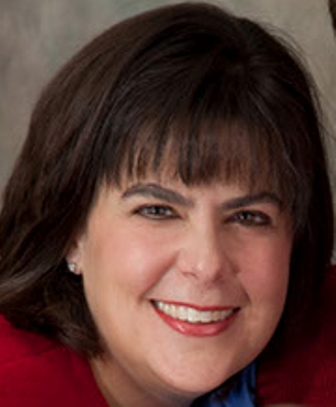Baylor Statistics and Eli Lilly Company Honored with National Award for Collaboration

Photo courtesy of Dr. Stacey Lindborg
Follow us on Twitter: @BaylorUMediaCom
Media contact: Frank Raczkiewicz, (254) 710-1964
WACO, Texas (July 31, 2012)- When Dr. John Seaman, professor of statistical science at Baylor University, began working with his former Ph.D. student Stacey Lindborg, he didn't realize what exactly it would lead to. His work with Lindborg was just the beginning of a strong collaboration between Baylor's department of statistical science and Eli Lilly and Company--a union that was recently honored by the American Statistical Association with the Statistical Partnerships among Academe, Industry, and Government (SPAIG) Award.
The citation of the award, which was formally presented at the Joint Statistical Meetings in San Diego on July 31, reads "In recognition of the shared vision and mutual support between Eli Lilly and Company and Baylor University in the creation of a partnership for the advancement of biopharmaceutical statistical research and the training of statistical scientists."
The collaboration began in 1996 with Seaman and Lindborg, who joined Lilly after completing her Ph.D. in statistics at Baylor, on a project that involved the application of methods that she developed in her dissertation from Lilly data. The partnerships grew from there, with several other Ph.D. students working on problems with missing data. In the fall of the 2005, Lilly awarded Baylor with $100,000 to expand the relationship across Lilly to non-Baylor alumni and engaging all faculty at Baylor.
In 2008, per Lilly's request, Baylor faculty and doctoral students began working on projects from Lilly's research and development portfolio. By doing so, the Baylor-Lilly relationship expanded to include funding for faculty in the statistics department, as well as students working in research and development. To date, this joint research initiative has generated nearly $200,000 for Baylor University to fund work by faculty and students.
Lindborg, who can partly be credited with starting the partnership, said that she believes it makes sense for scholars and professionals to come together.
"Businesses have an inherent pressure which often results in a lack of time for methodological papers, and yet the business we're in [research and development] presents challenging, real-world problems that need methodological advances to appropriately analyze data from clinical trials. Academia by nature has more freedom from a time perspective and values the generation of new methods which can be published. Academia often does not have ties to data from clinical trials," she explained. "Thus when individuals across business and academia choose to form a collaboration, it can prove to be very productive and fun."
Dr. James Stamey, associate professor of statistical science and graduate program director at Baylor, believes that the partnership is extremely beneficial to both the students involved and the department itself.
"For the faculty, this collaboration allows us to make sure our research is relevant. We can stay aware of what other academic professionals are doing by reading academic journals, but those publications do not always provide a good indication of what is of interest to industry. By making regular visits to Indianapolis and working directly with Eli Lilly statisticians and scientists, we can be assured we are working on problems that are of interest," Stamey said.
He said that students are directly impacted by the partnership with Eli Lilly statisticians "because what they learn in the classroom, the projects they work on and their dissertation topics are of interest to both an academic audience and an industry audience. Some of our students also get to work directly with Eli Lilly on projects as well, which is a great experience."
Stamey said that in his opinion, the biggest benefit from the collaboration was making sure that the work stayed relevant. Seaman's answer, though along the same lines, was focused on the continued involvement in the practical biomedical problems that the partnership allowed and the impact on students.
"Faculty and student research benefit tremendously from this collaboration. Many of our students work at biomedical research institutions--research hospitals, pharmaceutical firms, etc--upon graduation, so having one or more chapters in their dissertations with that focus is very important to them, both in landing such jobs, and in being successful in them," Seaman said.
Seaman, who is the other half responsible for the relationship that led to the collaboration, is very happy with the outcome.
"Like any professor, I'm delighted to see work with a former student become so fruitful. That it continues to enrich the research experience of current students is icing on the cake," Seaman said.
ABOUT BAYLOR UNIVERSITY
Baylor University is a private Christian University and a nationally ranked research institution, characterized as having "high research activity" by the Carnegie Foundation for the Advancement of Teaching. The University provides a vibrant campus community for approximately 15,000 students by blending interdisciplinary research with an international reputation for educational excellence and a faculty commitment to teaching and scholarship. Chartered in 1845 by the Republic of Texas through the efforts of Baptist pioneers, Baylor is the oldest continually operating University in Texas. Located in Waco, Baylor welcomes students from all 50 states and more than 80 countries to study a broad range of degrees among its 11 nationally recognized academic divisions. Baylor sponsors 19 varsity athletic teams and is a founding member of the Big 12 Conference.
ABOUT BAYLOR COLLEGE OF ARTS & SCIENCES
The College of Arts & Sciences is Baylor University's oldest and largest academic division, consisting of 26 academic departments and 13 academic centers and institutes. The more than 5,000 courses taught in the College span topics from art and theatre to religion, philosophy, sociology and the natural sciences. Faculty conduct research around the world and research on the undergraduate and graduate level is prevalent throughout all disciplines. Visit www.baylor.edu/artsandsciences.
by Mallory Hisler, student newswriter, (254) 710-6805